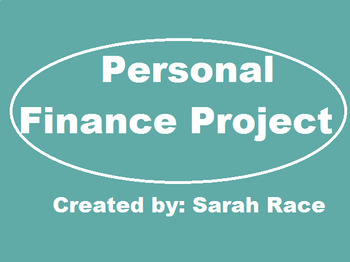Personal Finance Project: Complete Budget Project
- Zip
Products in this Bundle (19)
showing 1-5 of 19 products
Description
After the Great Recession, Florida made it mandatory for all high school seniors to have completed a course that includes personal finance skills. In our Economics class we cover this through a Personal Finance Project. This is potentially the most relevant and important assignment we can give our students before they graduate. The project gives them real life skills and the opportunity to practice these skills before they are officially initiated into the “real world.” This project also provides an opportunity for students to discuss personal finance with their parents and other adults, so they have more insight. The hope is that students will work with their limited income for the project, completing all sections of the project, and keep a hold of it as a reference for future use.
Student Expectations:
· Determine their pay after taxes (federal and FICA)
· Fill out a W-4
· Estimate their monthly budget
· Choose a bank and research checking and savings accounts and credit cards
· Find a place to rent and estimate utilities
· Decide and estimate the cost for transportation
· Research and find health, life, and car insurance
· Pick a cell phone and internet provider
· Estimate their eventual social security checks
· Determine their monthly investment type, amount, and estimated return
· Develop a savings goal
· Complete a shopping list for food, personal hygiene, cleaning, clothing, and
entertainment
· Submit a final budget sheet


